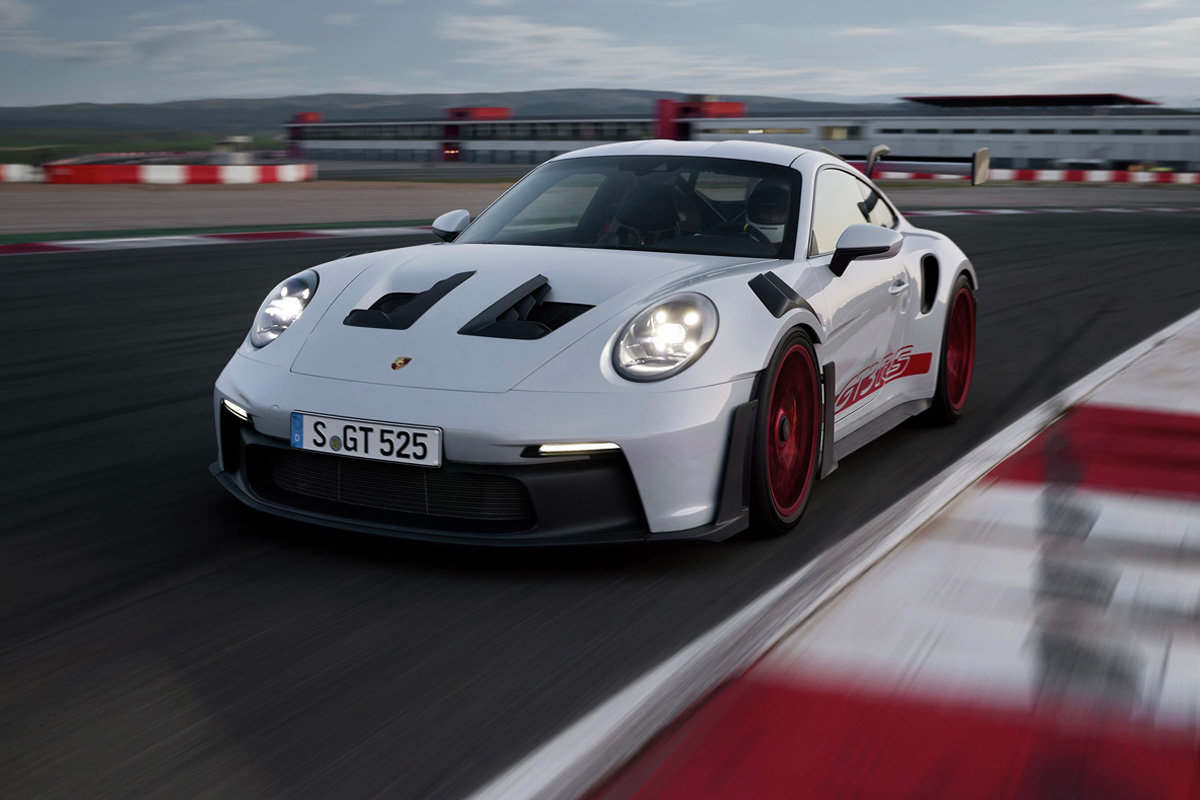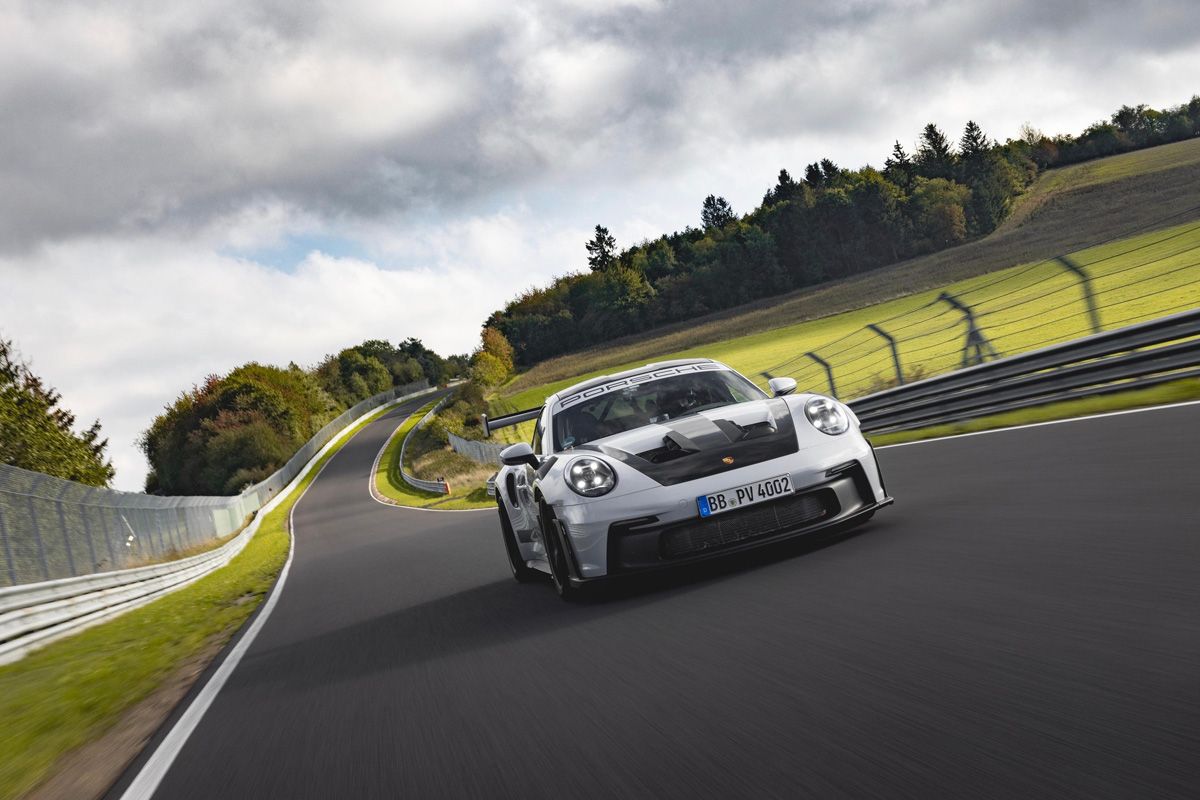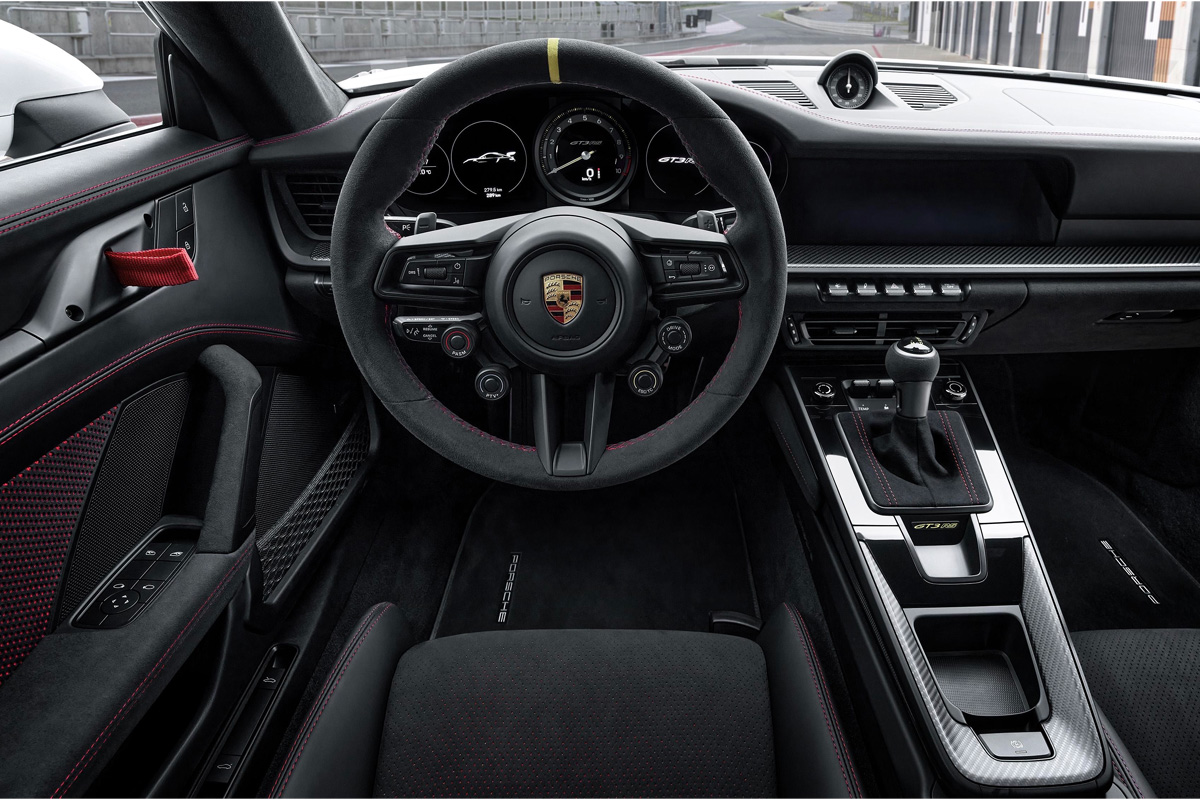The highly anticipated supercar Porsche 911 GT3 RS not only boasts everything expected from a new 911 RS model but also brand-new updated systems for maximum performance.
Porsche 911 is definitely more than an icon in the world of automobiles. It is the gift that keeps on giving, especially for fast car enthusiasts. When the eighth generation 992 series was launched, fans of road-legal high-performance sports cars rejoiced. Premiered globally in August 2022, a new addition to the family arrived in the form of the 911 GT3 RS. Shifting more towards motorsport, it features 386 kW power, an intelligent lightweight construction, complete with new cooling and aerodynamic systems.
The significant performance boost comes from moving the radiator of the GT3 RS to the middle. Instead of the usual three-radiator layout, it relies on a large, angled centre radiator in the car’s nose. This has made it possible to use the space freed up on the sides to integrate active aerodynamic elements, along with adjustable wing elements in the front and on the two-part rear wing to provide 409kg of total downforce at 125 mph.
As for the look, the 911 GT3 RS is immediately recognisable from the large number of functional aerodynamic elements. For the first time on a Porsche production vehicle, the upper edge of the rear wing is higher than the car’s roof, while the front end no longer has a front spoiler, but instead features a front splitter that divides the air flowing over and underneath. The remaining outer part has inlets, side blades and fins for optimised airflow, with air openings on the front and sides used exclusively to improve aerodynamics.
The 911 GT3 RS offers three driving modes: Normal, Sport and Track. In Track mode, the basic settings can be individually adjusted, while the other settings can adjust the rebound and compression damping of the front and rear axles. Another first in a Porsche is the installation of a drag reduction system to achieve low drag and higher speeds on straight sections of the track. Even the suspension comes in for aerodynamic attention, with components of the double-wishbone front axle designed in teardrop-shaped profiles.
Intelligent lightweight construction has been a basic principle of all RS models and the 911 GT3 RS weighs in at only 1,450kg despite many larger components. The doors, front wings, roof and front bonnet, for example, are made from CFRP. Lightweight CFRP is also used in the interior, for example in the standard full bucket seats.
Lastly, there’s no discussing a supercar without observing its engine. The power increase is achieved primarily via new camshafts with modified cam profiles, with single-throttle intake system and the rigid valve drive derived from motorsport. That being said, the 911 GT3 RS accelerates from zero to 100 mph in a staggering 3.2 seconds and reaches a top speed of 296 mph in seventh gear.
Porsche Indonesia
























